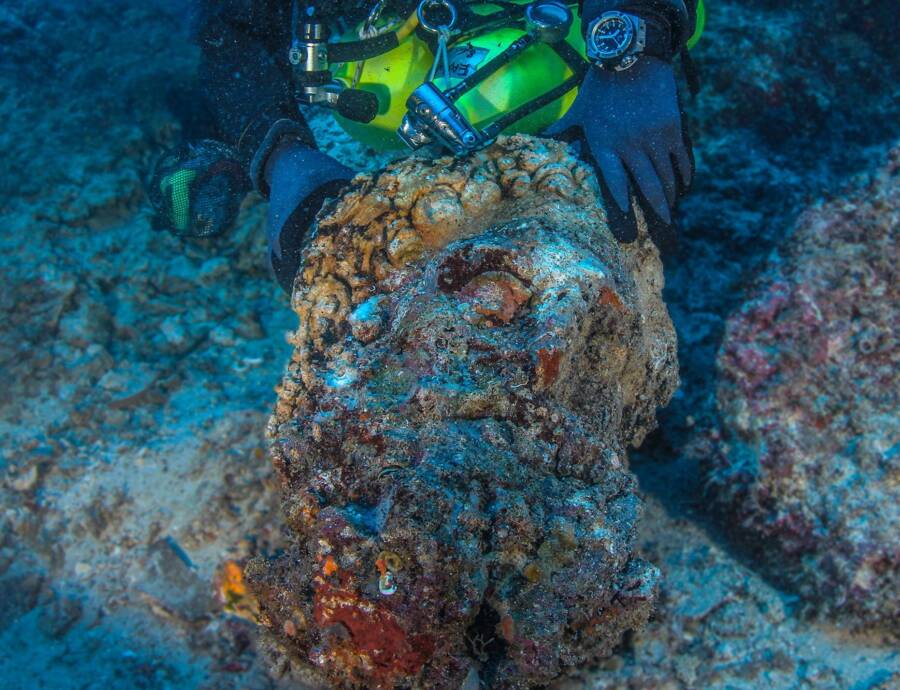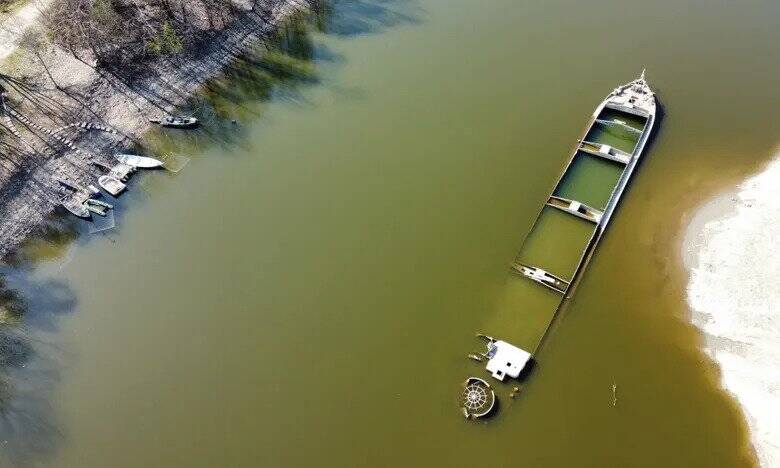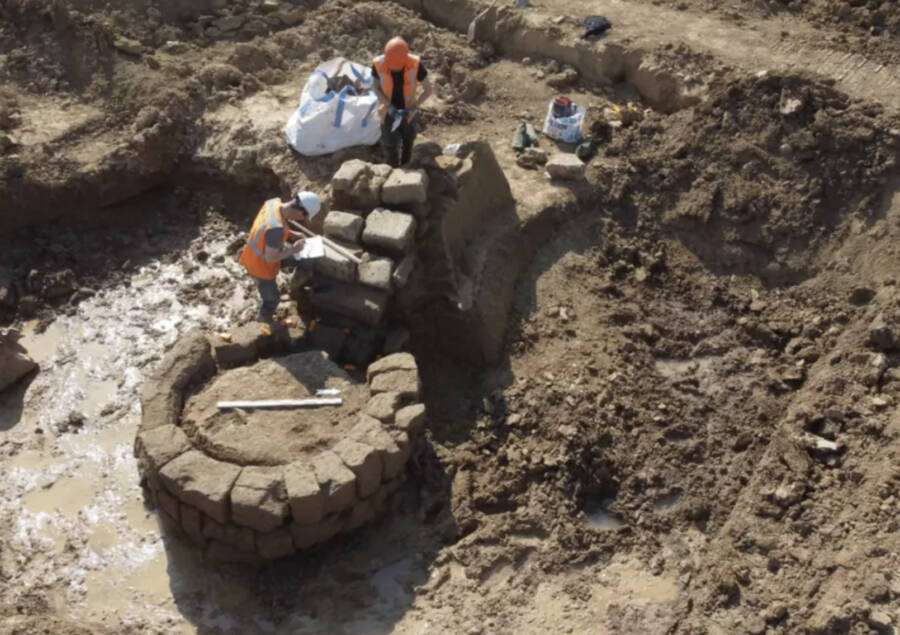Head from a 2,000-year-old Hercules statue found in a Greek shipwreck, submerged WWII barge reappears in Italy, ancient Roman temples unearthed in the Netherlands.
Divers In The Mediterranean Just Uncovered A 2,000-Year-Old Head Of Hercules Inside A Greek Shipwreck

Greek Ministry Of CultureIn addition to the head of Hercules as well as a group of assorted copper and wood artifacts, researchers also uncovered two human teeth, perfectly preserved in hardened marine deposits even after 2,000 years.
While exploring the sea floor off the Greek island of Antikythera in 1900, a lone diver happened upon something as astonishing as it was surreal. There before him was the massive shipwreck of an ancient Greek vessel complete with the ghastly remains of its fallen crew. This discovery was so shocking that when he got back to the surface and told his captain, he was sure that the nitrogen in the diver’s tank had simply caused him to see things. Then the captain dove down himself to check — and came back up with a bronze arm from one of the wreck’s dozens of statues.
In the 120 years since, researchers have found untold treasures aboard the now-historic “Antikythera shipwreck,” including dozens of marble statues, a bronze lyre, countless coins and pieces of pottery, and a terrifying weapon known as a “dolphin,” an enormous lead bulb outfitted with an iron spike that could rip through an enemy vessel. They’ve even found a device that used gears to track celestial movements with such precision that experts call it “the world’s oldest computer.” And now, divers exploring a previously hidden portion of the wreck have found a 2,000-year-old marble head from a statue of Hercules.
Discover more about this astounding find at the bottom of the Mediterranean here.
A Devastating Drought Just Revealed A Sunken World War II Shipwreck In Italy’s Largest River

Alessio BoninThe drought exposed a barge that sank in 1943.
A terrible drought in Italy has revealed a relic lost by history — a barge that sank in Italy’s Po River during World War II.
The barge, a WWII cargo ship called the Zibello, once traversed the Po River to transport wood between the Atlantic Ocean and Cremona in Lombardy. It sank in 1943 following a bombardment by American forces, where it’s been submerged ever since.
Dig deeper in this report.
Archaeologists In The Netherlands Just Unearthed A 2,000-Year-Old Roman Temple Complex

RAAPArchaeologists uncovered a stone well in addition to sculptures, painted plaster walls, and remnants of armor.
Amateur archaeologists digging at a clay extraction site in the Netherlands came across the find of their lives in late 2021 when they unearthed a nearly-intact Roman temple complex. Dating to the first century C.E., the structures were likely used by soldiers stationed at the Roman Empire’s northern boundary.
The complex is located in the village of Herwen-Hemeling near the Roman Limes, or Limes Germanicus, a UNESCO World Heritage Site comprising a series of outposts and fortifications along what was once the empire’s edge.
Read on here.





